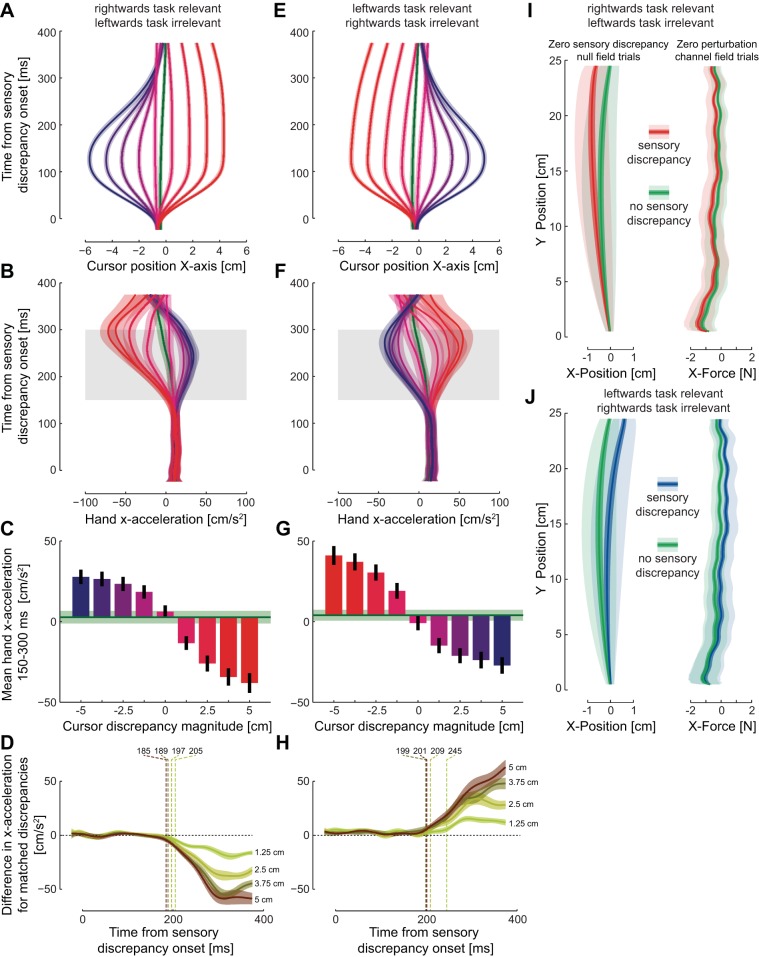Fig. 6.
Corrective responses on the sensory discrepancy trials. A: mean (solid lines) and SE across subjects (shaded region) for the cursor position on the sensory discrepancy trials for the rightward task-relevant and leftward task-irrelevant environments. Green trace shows the unperturbed mean trajectory for the previous no sensory discrepancy environment. Values are plotted as a function of time from the onset of the sensory discrepancies. B: mean hand acceleration in the lateral direction for the conditions shown in A. C: mean hand acceleration over the interval 150–300 ms from the onset of the discrepancies. Green line and shaded region show the mean values for the initial no sensory discrepancy trials. D: difference in the hand x-acceleration between the sensory discrepancies of matched size for the conditions in C. The acceleration for the sensory discrepancy to the right (e.g., +5) was contrasted with the acceleration to the left for the same magnitude discrepancy (e.g., −5) to determine the onset time of any difference in the magnitude of these responses (dashed line). If the magnitudes were of equal size the difference would remain at zero. Vertical dashed lines indicate the time at which the difference was determined to be significantly different for each condition. E: cursor position for the leftward task-relevant and rightward task-irrelevant environments. F: lateral hand acceleration for the condition shown in A. G: mean hand acceleration over the interval 150–300 ms. H: difference in the hand x-acceleration between the sensory discrepancies of matched size for the conditions in G. I, left: comparison of the mean trajectories for the normal reaching trials in which the visual cursor matches the hand location (zero sensory discrepancy) in the no sensory discrepancy condition (green) and the rightward task-relevant and leftward task-irrelevant condition (red). Mean, SE, and SD are plotted as a function of the distance to the target. Right: comparison of the mean force exerted on the channel wall in the zero perturbation probe trials in the 2 conditions. J, left: mean trajectories for the normal reaching trials (zero sensory discrepancy) in the no sensory discrepancy condition (green) and the rightward task-relevant and leftward task-irrelevant condition (red). Right: mean force exerted on the channel wall in the zero perturbation probe trials.

